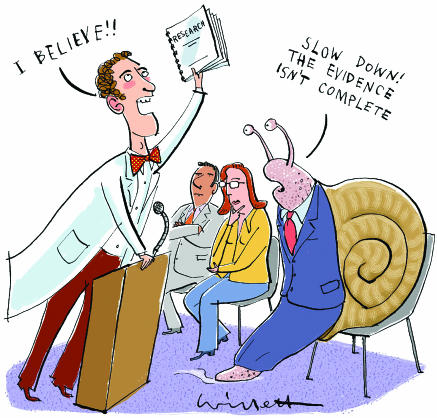Abstract: Research on the Effectiveness of Music Therapy & DIR/Floortime with Children with Autism (does this count as evidence? why? why not?)
The Effectiveness of Nordoff-Robbins Music Therapy within a Developmental, Individual-Differences, Relationship-based (DIR®)/Floortime™ Framework to the Treatment of Children with Autism
This study was concerned with the effectiveness of Nordoff-Robbins Music Therapy (NRMT) carried out within a Developmental, Individual-Difference, Relationship-based (DIR®)/Floortime™ framework in addressing the individual needs of children with autism. In NRMT, the child is an active participant in the music making process, playing various instruments that require no formal training. The therapist’s task is to improvise music built around the child’s musical responses, reactions, responses, and/or movements to engage him or her in a musical experience that will facilitate musical relatedness, communication, socialization, and awareness.
The DIR® model provides a comprehensive framework for assessing, understanding, and treating the child. It centers on helping the child master the building blocks of relating, communicating, and thinking through the formulation of relationships via interactive play, using Floortime™ (a systematic way of working with the children to help them reach their developmental potential) (Greenspan & Weider, 1998).
This study sought to determine the effectiveness of NRMT in meeting musical goals specifically established for each individual child, and to conclude if progress in musical goals paralleled progress in non-musical (DIR®) goals.
In the present study, NRMT and DIR® were used in tandem. NRMT was used as the
primary treatment approach, and focused primarily on musical goals and the establishment of musical relationships between therapists and child. DIR® was used as the primary means of conceptualizing and assessing the child’s strengths and needs in nonmusical modes of interaction and relationship, and evaluating the child’s progress in these areas. A combination of quantitative and qualitative data was collected, analyzed, andcompared. The outcomes of therapy with each child were measured and evaluated quantitatively; the process of achieving these will be described and analyzed qualitatively
Conclusion in Regards to the Functional Emotional Assessment Scale (FEAS)
In conclusion, it appeared that NRMT contributed to Functional Emotional
Developmental Levels (FEDL), and the areas in which it appeared to be most beneficial were areas of self-regulation (area I), engagement (area II), and two-way purposeful communication (area III). Specifically, the flexibility employed in NRMT to meet and connect with the unique musicality of each child, combined with the non-verbal, social and emotional components of the music itself, appeared to facilitate self-regulation (area I), engagement (area II), and two-way purposeful communication (area III). Although other social-emotional areas improved among the children, as indicated by the Functional Emotional Assessment Scale (FEAS); it appeared that NRMT showed consistent and clinically significant improvements in areas I, II, and III.
Conclusion in Regards to the Goal Attainment Scale (GAS)
In looking at common areas of improvement on the GAS, each child showed significant progress in two goal areas: 1) initiating interaction and forming relationship within musical play, and 2) two-way purposeful communication through music. In addition, each child whose GAS included the goals of problem-solving through musical interresponsiveness showed improvement. Those children who had the goal of engagement and shared attention through musical relatedness also improved in this area. Furthermore, improvements were evident in the children who were given the goal of self-regulation and interest in the world through musical awareness, and children showed improvement in the goals of bridging musical ideas and musical interrelatedness. In short, each child in the study showed improvements in every individualized GAS goal area.
Abstract is taken from Doctoral Dissertation:
| Contributions of Nordoff-Robbins Music Therapy within a Developmental, Individual-Differences, Relationship-based (DIRRTM)/Floortime framework to the treatment of children with autism: Four cases studies |
| by Carpente, John A., Ph.D., TEMPLE UNIVERSITY, 2009, 211 pages; 3359621 |


It seems to me that the true common ground between NRMT and DIR is the opportunity for playfulness and drama in a context that is inviting, accepting, and engaging. After 37yrs working with NRMT, and subsequently DIR, I now feel that ASD is actually more fluid and “subject to change” than we imagined, and the musical context, as a “safe space” for children on the spectrum, makes that possible.
To your question: does it inform treatment? Unfortunately, the most important aspects of NRMT/DIR intervention are the most difficult to quantify, and the most difficult to teach. The spontaneous and engaging presence “in the music” of the therapist, and the willingness to trust the process and not try to formulate and code it, is, I believe, what is most affecting to the child. As music therapists, we want the “score”, what comes next, how will this work, what do we do if it doesn’t? We get scared when we don’t know, when we have to wait, when we feel we’ve made a mistake. Maybe we need to have floortime sessions with MT students to get them out of their heads and into the moment?!